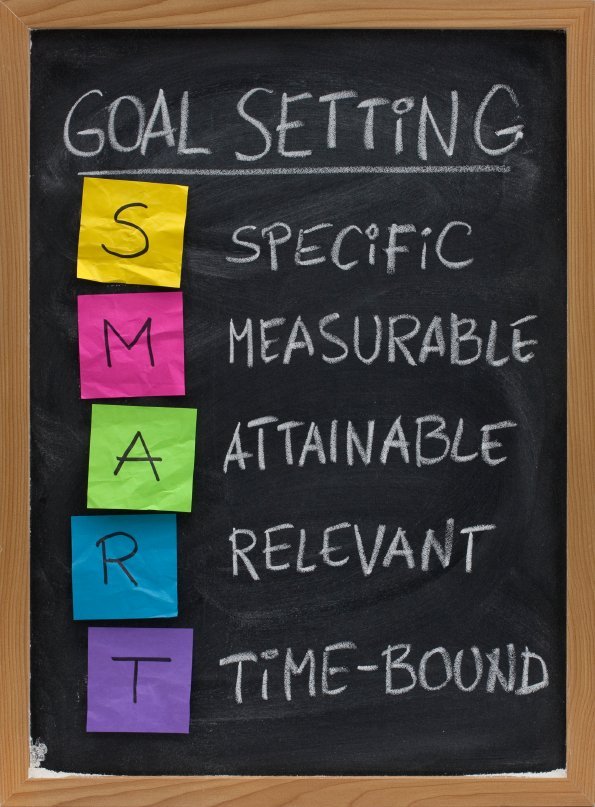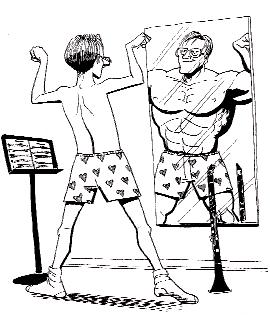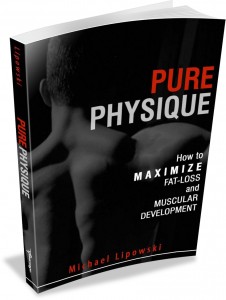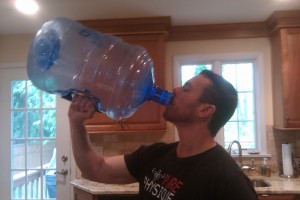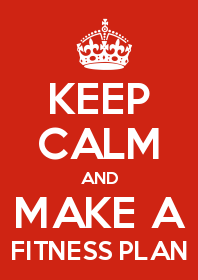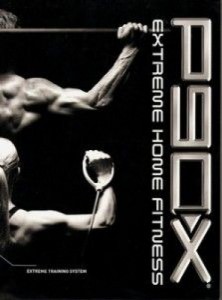
It’s all about muscle confusion right? Just keep doing different sixty minute workouts six times a week and your fat-loss, muscle building, fitness prayers will be answered. At least that what the developer of the P90X series, Tony Horton, would have you believe. As discussed in the first Fitness Trends vs. Fitness Truth blog the major mistake made among trendsetting workout programs, and the ultimate reason for their demise is ignorance of the 7 Principles of Exercise (intensity, volume, frequency, overload, specificity, diminishing returns, and individualism) and how they interrelate. You might be able to fool people but you can’t cheat science.
Don’t get me wrong, not everything taught in P90X is wrong per se though I disagree with their overall approach to exercise and Mr. Horton does have a tendency to make many false or misleading statements such as “Do low reps if you’re looking for mass and high reps if you’re looking for lean [muscle].” The concept of performing exercise with high intensity is one positive component to the P90X program as is adding variety to your routine so you don’t become accustomed to your routine which under certain conditions will result in plateaus. When put into practice however, P90X takes valid concepts and misapplies them.
I will not go so far as to say that the program doesn’t work, it does…under certain conditions and to varying degrees. However, nearly every exercise program “works” to some extent or has “some” effect. That does not necessarily make it ideal or the most effective approach to exercise, especially in light of its risk/reward ratio and long term effects. Keep in mind that what is tolerable over the short term might not (and rarely is) sustainable over the long term. This is a major hang up for many people. Because a program yielded good results over a period they begin to believe that their results will continue in the same direction or can be sustained on said program.
For a thorough examination of the pros, cons, and misapplication of P90X let’s look at how the program stacks up against the 7 Principles of Exercise.
Fitness Truth vs. P90X
At the core of every exercise program is the Principle of Individualism. This principle states that exercise must be prescribed in accordance with the needs, goals, abilities, limitations, and preferences of the individual. Whenever a program is created before you know anything about the individual who is about to partake in it you are already in violation of this principle. P90X violates this principle on many levels as you’ll see in our examination of the other six principles. That said I’ll be the first to admit that most people who are new to exercise or that have not exercised for a number of years will see results relatively fast doing almost any type of training program. This is a very big factor in the success for those featured as P90X success stories.
Let’s be honest most of the people who undertake the P90X program are those that are under or untrained and looking for a way to get some direction and avoid going to a gym. For the advanced trainee who has years of solid weight training under his/her belt P90X is unlikely to move the results meter unless it so happens—by sheer luck—to fall in line with their specific needs.
Be Intense…But Not Too Intense
Intensity is the possible percentage of momentary muscular and volitional effort exerted. The measure of how hard a person is working at any given moment during exercise. P90X encourage its participants to exercise with a high level of effort which is great but they clearly misunderstand the principle. If a person is truly training with their highest level of effort then they would be limited in the amount of exercise they could perform but the quality and effectiveness of that exercise in stimulating gains in muscular strength and size would be high.
Throughout P90X the trainee is prompted to not push themselves to fatigue; to be able to complete every repetition of every set. Why? Because if they actually pushed some of their exercises to momentary muscular fatigue (failure) they would not make it through the entire workout—in effect they would not need to perform as much exercise as is suggested. It is at this point it becomes obvious that this is an endurance program and not for anyone who wants to develop muscle or strength. (Note: while exercise will burn calories and can have a positive effect on the metabolism the success of P90X in burning fat is a function of participants following a calorie restricting diet and NOT the exercise program itself).
Since intensity is a function of a person’s mental capability to push themselves and work through discomfort the degree of intensity experienced from these workouts can be sufficient for those who are newbies or that lack the ability to push themselves to the level suggested by P90X. For the experienced lifter or those accustomed to hard training already the intensity of this workout will be a step back.
If Some Is Good, More Is Better
Volume is the amount of exercise performed in a workout. It refers to the number of repetitions, time under tension, and the number of sets performed. Exercise volume is determined largely by an individual’s muscle fiber type, rate-of-fatigue, tolerance to exercise stress, and objectives (improved endurance, muscle hypertrophy, increased strength, etc.). It is not farfetched to say that the overwhelming majority—if not everybody—who does P90X does not know their muscle fiber type, rate of fatigue, or tolerance to exercise stress because if they did they wouldn’t need P90X. The only thing they may be clear on is that they want to be in better shape when they finish than when they start.
Why performing the appropriate volume of exercise is important is best explained by looking at it in conjunction with training frequency. Frequency is how often exercise occurs. P90X has trainees exercising 6 days a week. Is this frequency of exercise really necessary? Hardly. Can and will it become counterproductive over time? Absolutely.
As with volume, frequency should be a byproduct of individual’s muscle make up and goals. The only thing the high volume, high frequency approach promoted through this program accomplishes is the burning of calories on a daily basis. For those not adhering to a proper diet in which calories are at or below maintenance levels this extra activity may help in burning body fat but is unnecessary if in a caloric deficit. Over the long run this frequency and volume of exercise has the potential to negatively affect recovery and will result in Diminishing Returns.
On a side note: there is absolutely no need for individual abdominal/core routines like that in P90X which involve 300 movements and last 16 minutes. This is not only redundant but ineffective in furthering Ab development. Plenty has been written on this subject so we’ll forgo going into detail. The only points needing to be understood are that the Abs are engaged in most every exercise (especially squats, deadlifts, pulldowns, and pullovers) and that achievement of the sacred six-pack is more a function of low body-fat than muscle development.
This Can’t Work Forever?
The Principle of Diminishing Returns explains that exercise that exceeds the minimum necessary to produce a (potentially) optimum response is pointless as it relates to the best interests of the individual. Because the volume and frequency of P90X is fixed the chances of the program resulting in a lack of progress after (or before) the ninety days are completed is very high.
When you fail to regulate training demands (i.e. intensity, volume, frequency) according to your needs what do you think happens? You stop getting results.
When you fail to regulate training demands what else could happen? You could regress.
It needs to be understood that exercising an hour each day, six days a week is not a recipe for success for everyone based on the principle of individualism and for most people will result in diminishing returns if adhered to for too long, as validated by the science of stress physiology —and serve as a waste of your valuable time.
Confusion over “Muscle Confusion”
 Muscle confusion is touted as the secret sauce of P90X. The theory is as stated on the Beach Body website (the producers of P90X) is that “P90X uses targeted training phases so your body keeps adapting and growing. You’ll never “plateau”—which means your body will never get used to the routines, making improvements slow down or even stop.”
Muscle confusion is touted as the secret sauce of P90X. The theory is as stated on the Beach Body website (the producers of P90X) is that “P90X uses targeted training phases so your body keeps adapting and growing. You’ll never “plateau”—which means your body will never get used to the routines, making improvements slow down or even stop.”
Sounds great…in theory. Muscle confusion is nothing more than a gimmicky way of expressing the benefit of variation in an exercise. It is true that variation can help break through plateaus and avoid boredom but one needs to be careful in how much and how often variation is applied. This is best explained by examining the S.A.I.D. Principle.
The S.A.I.D. (specific adaptation to imposed demands) Principle states that the nature of the exercise program will place specific demands on the body that leads to a specific result. This is why someone who wants to build muscle for the purpose of being stronger lifts weights instead of doing water aerobics. It’s why someone who is training for a marathon runs does long distance runs each day instead of sprints. What you do determines what you get.
So what do you get from P90X? You get a lot of endurance training in the form of rep pumping high volume weight training, calisthenics which they attempt to pass off as “plyometrics”, and cardio kickboxing. You get a workout that over time will help you get good at, or at least accustomed to, doing a lot of exercise. You are likely to become more physically fit but only up until a certain point (which is true of any exercise program) and in a specific way (i.e. improved endurance). There’s nothing inherently wrong with this but make no mistake, although you are lifting weights in some of these workouts you are not going build much muscle if that is what you are looking for. If you are looking to improve your strength you are not going build much of that either unless you are completely new to lifting weights. These workouts are all about endurance. Even if you’re focus is on fat-loss these workouts as with any other will do little to burn body fat unless it puts you in a caloric deficit as already mentioned earlier.
The S.A.I.D. Principle not only relates to the nature of the workout program but the exercises themselves. For the beginner and intermediate trainee it is important to perform the same exercises, and workouts, for a period of 4-8 weeks in order to make neuromuscular adaptations. Simply stated you must become skilled at performing an exercise so that you can adequately stimulate the target muscles. Until the skill is learned you will engage unrelated and outlying muscles minimizing stimulation to intended muscle group. In getting it wrong P90X actually got it right in this instance. Meaning their focus is on variation but it’s only in the type of workout being performed (i.e. weight training vs. calisthenics vs. cardio kickboxing vs. yoga). When performing the weight training workouts as well as the others the trainee is repeating the same movements over and over again. In this way they are getting the opportunity to learn the exercises and make the necessary neuromuscular adaptations…just hope it’s the right ones.
The most fundamental way to stimulate gains in muscular size and strength is through overload. Overload is the application of progressively greater demands through regular progression. In a traditional weight training program overload is achieved through an increase in the amount of weight lifted, repetitions performed or time under tension. P90X does encourage its trainees to up the ante and make the exercises heavier which is definitely one bright spot. They also suggest at times adding more volume to this already high volume routine but ignore how this impacts the program on a whole and more importantly the person following it.
And Technique?
A major drawback of P90X is the poor weight lifting technique that a newbie could easily establish from the onset. (Don’t get me wrong, there are plenty of people who have decades of weight training experience that also have exceptionally poor technique—much of which they developed in their first year of training.) The demonstrated performance of weight training exercises in these videos are best described as “rep pumping”. Meaning there is no real emphasis or focus on the muscles being trained, it’s all about pumping out reps in a certain amount of time. It would be easy for someone to assume based on what they see in the video—not what they hear—that the most important factor is to pump out a certain number of reps instead of slowing things down and putting concentrated effort into the movement.
Over time this can result in injury as well as diminished effectiveness of the exercise. To be fair, the same situation can arise from following any training program in which proper technique is not first learned. The inability to properly perform ones exercises is the reason that so many trainees are quick to add extra exercise when results begin to stagnate. If better at targeting the intended muscles and getting the most they could out of each exercise then additional exercise to make up for poor exercise would be necessary, reducing the likelihood of incurring an overuse injury.
 For advanced trainees that have developed a high level of lifting proficiency and have reached the upper limits of how much weight they can lift, frequent changes to their training can help to disrupt homeostasis and present the body with a new set demands from which it must adapt. This is where the “muscle confusion” concept comes into practice. That being said the changes must still comply with the exercise principles and be in alignment with your goals. Random changes or workouts for the purpose of confusion will in fact confuse the body but likely to have negative consequences or no impact at all. Change needs to be deliberate, planned. Check out the IART books APEX and Tactical Fitness to learn more about how to implement variation as a plateau busting tactic.
For advanced trainees that have developed a high level of lifting proficiency and have reached the upper limits of how much weight they can lift, frequent changes to their training can help to disrupt homeostasis and present the body with a new set demands from which it must adapt. This is where the “muscle confusion” concept comes into practice. That being said the changes must still comply with the exercise principles and be in alignment with your goals. Random changes or workouts for the purpose of confusion will in fact confuse the body but likely to have negative consequences or no impact at all. Change needs to be deliberate, planned. Check out the IART books APEX and Tactical Fitness to learn more about how to implement variation as a plateau busting tactic.
Final Thoughts
They say that the “X” in P90X stands for “extreme” but the only thing that’s extreme is the amount of activity performed and how often you have to do it. There is a tremendous amount of mysticism built around this program which is sure to contribute to the already mass confusion surrounding exercise. When it is all said and done we will be left with legions of people who tout the greatness of P90X and preaching the importance of muscle confusion but don’t know what aspects of the program work, what doesn’t, what’s necessary, what’s not, what’s true, what’s false, and why. What won’t change however is that the Principles of Exercise Science will always stand firm and trump the next trend.




